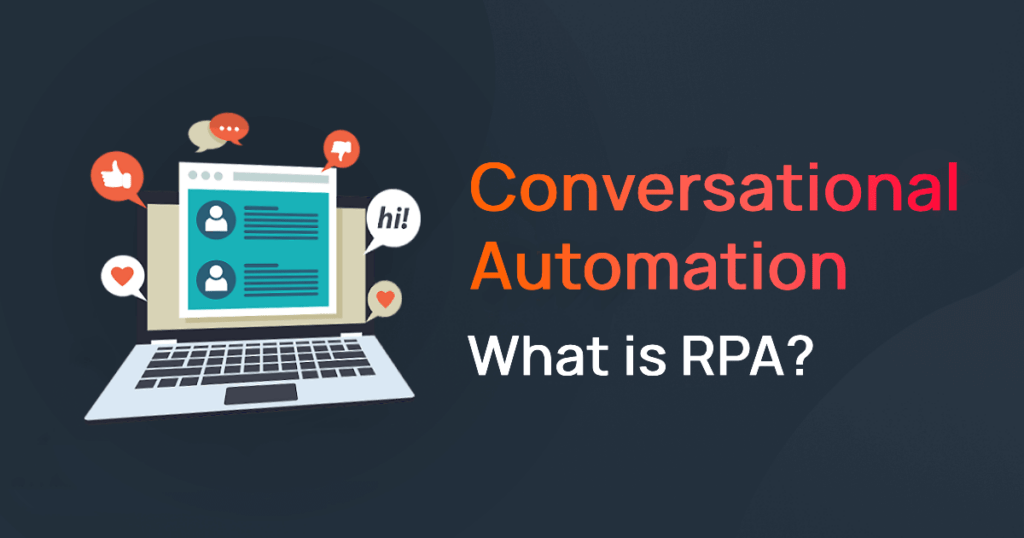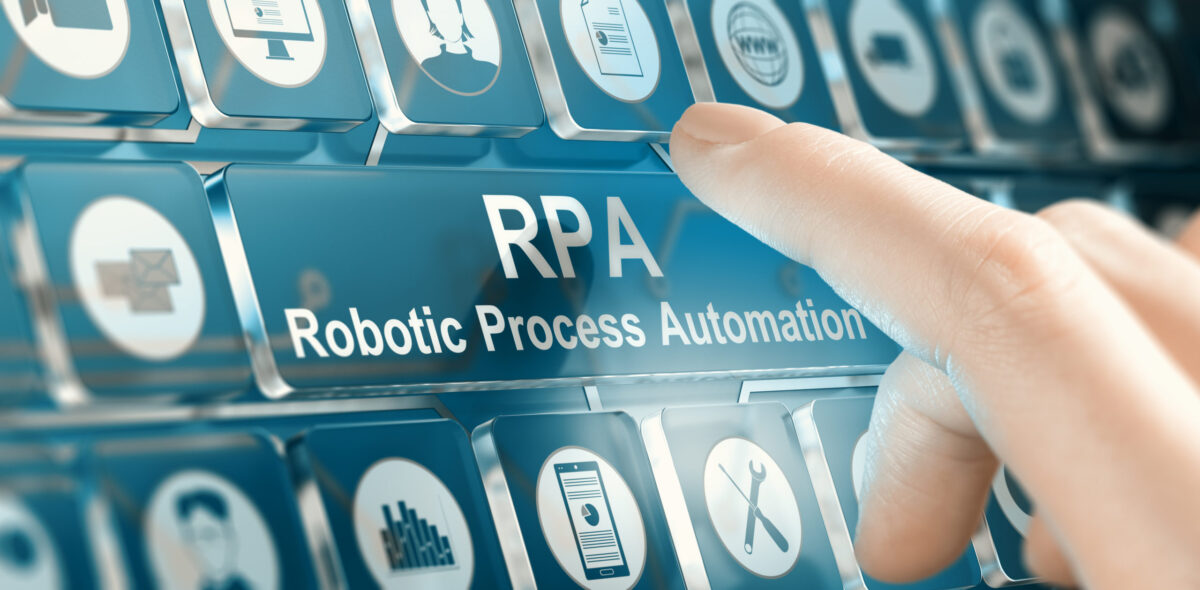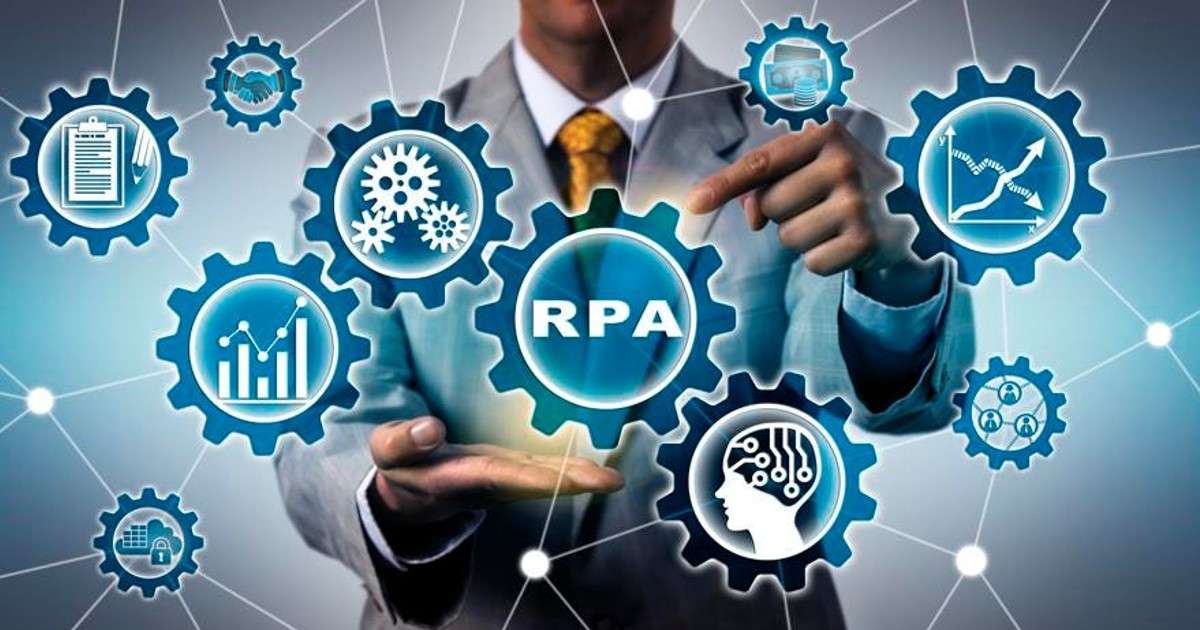Conversational Automation
In today’s fast-paced business landscape, automation is no longer a luxury but a necessity. This article delves into the intricacies of Conversational Automation and Robotic Process Automation (RPA), exploring their evolution, how they intersect, and their transformative impact on both front-office and back-office operations.
Read on to discover how these technologies are shaping the future of business efficiency.

What is Conversational Automation?
Conversational automation can include all Streamline tasks, processes, and workflows at the front and back office with ease through conversational experiences and intelligent automation.
Conversational automation (Conversational RPA) saves precious time for both your employees and your agents by automating complex customer conversations and workflows end-to-end.
What is RPA?
According to AI Terms Glossary and Wikipedia about RPA, Robotic Process Automation (RPA) is like having a digital workforce that can perform routine business tasks for you. Think of it as employing software robots or AI-powered tools to handle repetitive jobs, such as data entry or processing invoices, so your human team can focus on more complex and creative work.
This isn’t the same as traditional robot software, which controls physical robots. Instead, it’s about software “bots” that operate within your computer systems to do mundane tasks and make your business more efficient.

Robotic Process Automation (RPA) History
The roots of Robotic Process Automation (RPA) go back to the early 2000s. Pioneers of this industry, such as Blue Prism, focused on screen-scraping to help automate Windows desktop applications. Because the technology was fairly rudimentary, little attention was paid to RPA. Nowadays, AI-driven Robotic Process Automation has made huge strides in driving immense business growth.
Yet, growth continued, especially when UIPath came onto the scene. The founder and CEO, Daniel Dines, realized that enterprise automation software was woefully inadequate for customer needs. The option of Business Process Outsourcing (BPO) was also showing its limitations. So Dines built a platform that made it easier to focus on automating discrete tasks relatively quickly—say in a couple of months—by using drag-and-drop workflows to create bots for repetitive tasks.
The market exploded, as did the growth of UiPath. One of the company’s investors, Sequoia, noted that this was the fastest-growing enterprise software company ever.
But despite all the success, the RPA market still has problems. And this has opened up even more opportunities for new approaches and innovations.
One that holds much promise is Conversational RPA. It’s really about the next generation of this industry—and the market is certainly ready for it.
What then are AI-driven RPA and Conversational RPA? Let’s take a look:
How RPA is related to Conversational Automation?
RPA and conversational automation can be interrelated as both aim to streamline operations and enhance user experience, albeit in different realms of business. While RPA focuses on automating repetitive, rule-based tasks often behind the scenes, conversational automation aims to improve the customer-facing aspect by offering automated yet personalized interactions through chatbots or voice assistants.
In an integrated setup, conversational automation could collect user information, conversations, or preferences and trigger an RPA bot to perform a specific task, thus delivering a seamless, end-to-end automated experience.
Conversational RPA
Cloud-Native Software
Because the RPA industry is maturing, the technology stack has lagged. Much of the core software remains on Windows/.Net infrastructure. While there are often cloud components to core systems, such as with orchestration, the tools are often on-premises.
However, this presents some nagging problems. For example, it can be nearly impossible to capture enough data for important efforts like analytics, machine learning, and AI. Next, as RPA vendors come out with new versions of their software, maintenance can be a challenge.
Conversational RPA, on the other hand, is cloud-native. From inception, the architecture allows for complete data visibility and seamless management of the bots. This means that enterprises can gain ongoing insights about what’s happening without having to deal with the hassles of new versions conflicting with older workflows.

Delightful Customer Experience
In the enterprise software world, there is lots of talk about consumer-like interfaces. But this is still mostly talked about, including among traditional RPA vendors.
Yet, creating rich experiences in the software can be just as important as the underlying features. Let’s face it, People have become accustomed to standout service experience from apps like Uber, Instagram, and Snap.
With AI-driven RPA and Conversational AI automation, a key priority is making sure there is a superior user experience. That demands a natural, human-like interface that allows for performing duties, tasks, IT workflows, human interaction, and business AI workflows.
All this must be done in as few steps as possible and enable seamless access to any kind of web service.
An example of the power of the user experience is Slack (then again, the company was originally an online game!). The company founder, Stewart Butterfield (who, by the way, has an undergraduate degree in philosophy), was able to bring a much different perspective to collaboration software. He has also been relentless with customer feedback and employee experience.
AI and RPA
Yes, this is quite buzzy. But with RPA, AI has the potential to move the needle in a big way. The reason is simple: RPA involves a huge number of keystrokes. This data can then be turned into valuable insights.
Customer Satisfaction
As for Conversational RPA, the opportunities involve the use of applications such as virtual assistants and smart collaboration tools for interaction with both employees and other vendors and customers.
All these tools should be out-of-the-box, which will help with adoption across the organization. The fact is that most people will not have time to learn sophisticated algorithms and data models.
For the most part, Conversational RPA is about delivering greater self-service and customer expectations, but also improving productivity and customer satisfaction while driving down costs.
This means having proactive notifications when tasks are completed or have failed or stalled. It also leverages self-learning to expedite complex challenges like cloud and application integrations, compliance, and audit trail creation.
Bottom Line
In summary, conversational automation (RPA) is a pivotal technology that has evolved to drive business efficiency and customer satisfaction. While traditional RPA automates repetitive, back-end tasks, Conversational RPA leverages advanced AI to enhance front-end, customer-facing interactions or workflow automation for employees.
Despite the progress, challenges remain, particularly in technology stack adaptability and user experience. It’s clear that the next wave of innovation will likely come from startups, offering smarter, more user-friendly solutions in Conversational RPA.
Interested in exploring these capabilities further? Book a free demo today.
